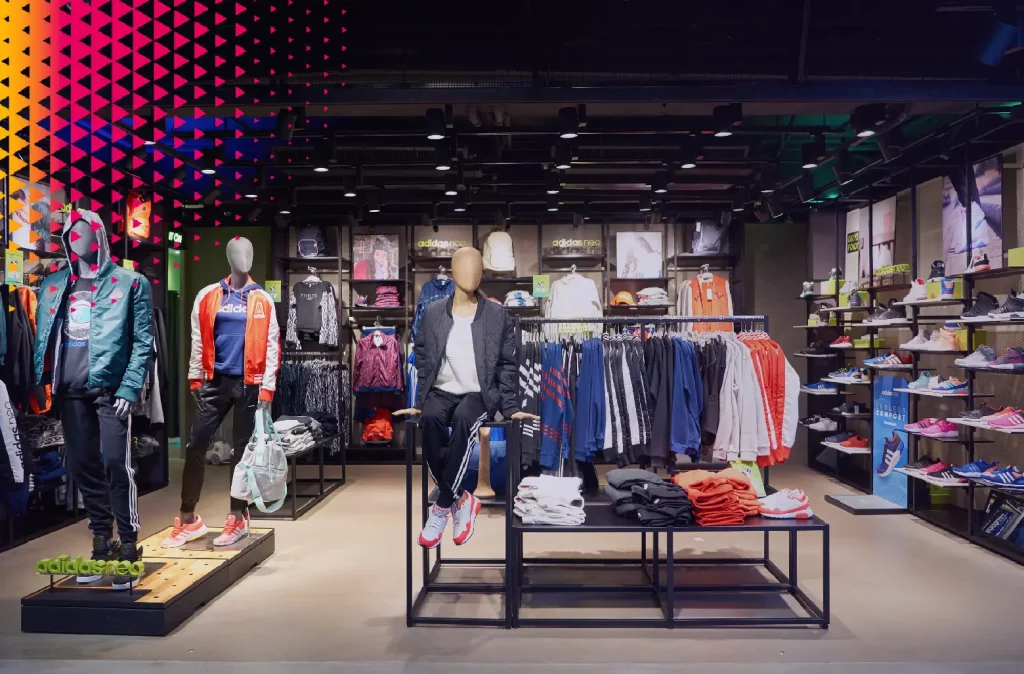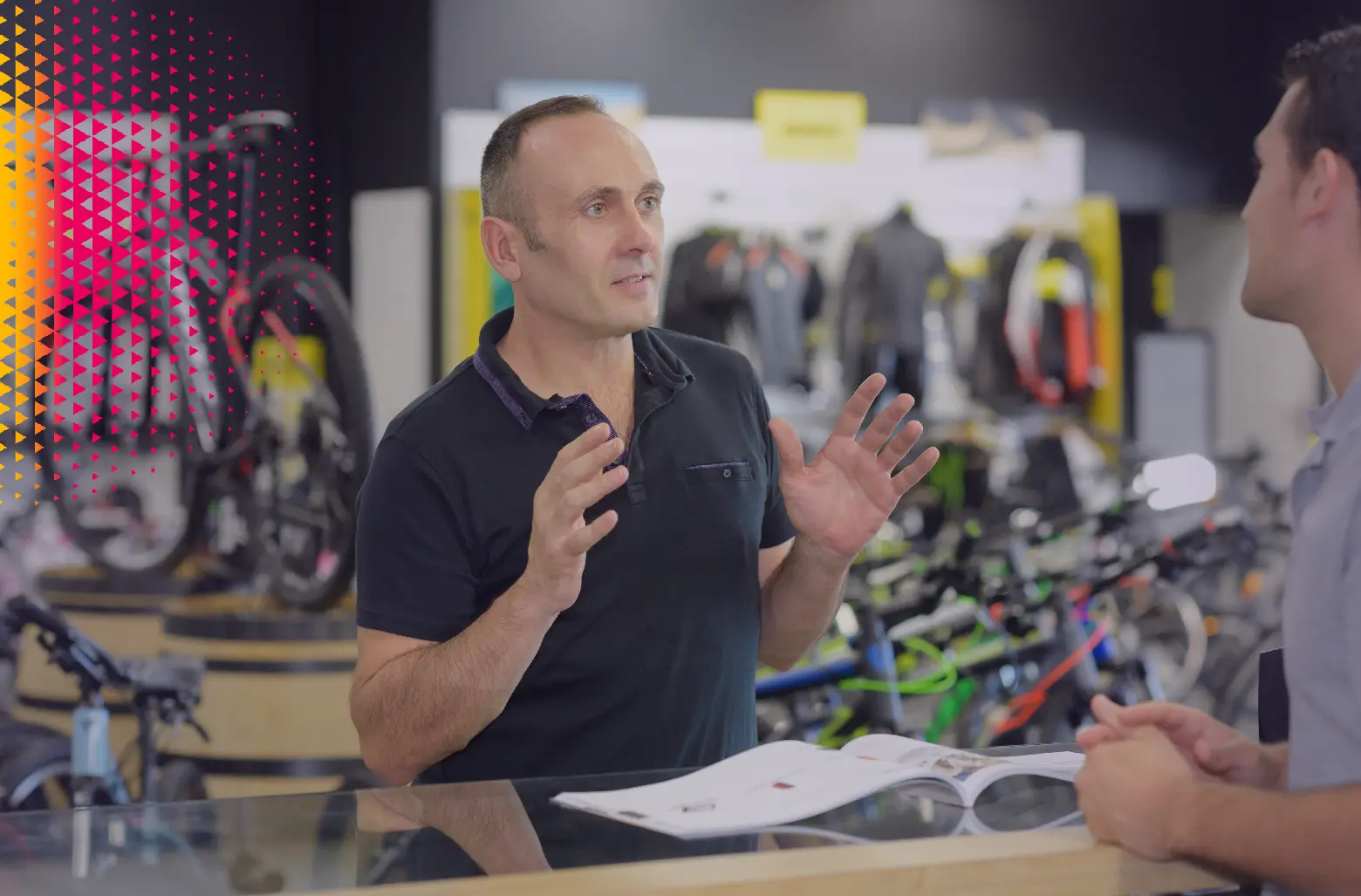Store staging: 6 ideas to implement

Store staging, a sensory marketing technique, is all about creating an immersive customer experience in your store. The goal is to stimulate consumers’ senses and emotions to draw them into the retail space, encourage purchases, and foster customer loyalty by making them want to return. More than just decoration, store staging is a highly distinctive strategy that involves a comprehensive array of staging elements. From promoting a new product or special offer to enhancing the overall customer experience, here are six ideas to help you stage your sports store effectively.
1. The display window
Here is the revised and improved translation with a more fluent and dynamic style while maintaining a professional tone:
The display window is the starting point for store staging. It’s your sports store’s first communication tool and plays a crucial role in attracting customers to explore your products and services. Here are some tips for creating a striking display window:
- Use vibrant colors and compelling visuals that catch the eye and draw the attention of passersby, while also aligning with your brand image.
- Embrace seasonality : showcase key products, popular items, or the latest arrivals in your sports store.
- Tell a story : create a scene that immediately resonates with consumers (e.g., mannequins dressed in winter sports gear for a ski rental shop).
- Leverage lighting to highlight your offerings and create an inviting ambiance.
- Regularly update your display window to keep customers and passersby interested and to promote new items. Temporary displays can spark consumer curiosity and offer a unique, immersive experience due to their short-lived nature.
While creativity is important, coherence is essential. Your display window should accurately reflect what’s inside your store. Overdoing the exterior is pointless if you can’t deliver the same experience inside. Remember, consumers need to feel guided and reassured once their attention is captured. A cohesive display ensures they feel confident and secure.
2. The podiums
Podiums are essential tools for store staging: these elevated displays are designed to highlight your product offerings. Their placement is strategic: they should be positioned in the store’s “hot” zones—high-traffic, central, and highly visible areas—to attract the attention of as many customers as possible.
Available in various sizes and shapes, and made from different materials, podiums can be enhanced with lighting and other visual elements. They are perfect for showcasing key products or seasonal collections in your sports store. Podiums help increase sales, boost brand visibility, and differentiate you from competitors by creating a unique shopping experience for your customers.
3. The endcaps
Originally, endcaps were used as mass display areas to showcase current promotions, particularly in large retail stores. However, they also present an excellent opportunity for store staging. The goal is to repurpose them to create themed displays that entice customers to explore the aisles. Endcaps allow you to promote new arrivals, capitalize on temporary displays, and build customer loyalty.
Beyond their aesthetic appeal, endcaps must adhere to essential merchandising principles:
- Safety: Ensure product accessibility while avoiding any risk of items falling or potential collisions with customers’ carts.
- Pricing: If your endcap features a key product, clearly display its price to avoid customer frustration.
- Availability: Avoid promoting items that are out of stock. Ensure you can meet customer demand by optimizing your stock rotation.
4. Advertising
To capture attention, reassure customers, and drive purchases, effective signage is crucial in store staging strategies. Over half of in-store purchases are unplanned, making Point of Sale Advertising (POS) a key player. Flags, banners, dynamic displays, stands, touch terminals—these formats convey vital information to your customers, whether it’s technical specifications, competitive advantages, or material origins.
Your in-store advertising must evolve with your product offerings. It’s essential to keep your prices current and create displays that align with your ongoing marketing campaigns and special offers.
POS advertising is continually advancing with the development of unique and innovative formats. Lenticular prints, plasma screens, scent stands, multimedia kiosks—utilize these tools to offer an enhanced customer experience and benefit from sensory advertising. This might include audiovisual messages at aisle ends, touch terminals for product exploration, tablets for virtual try-ons, or a dedicated TV channel broadcasting continuously.

5. Activities
Your product displays need to be dynamic. Once your window display is set, your podiums and endcaps are installed, and your signage is in place, you need to animate everything to successfully stage your store.
Your in-store presenters, like your sales staff, should be experts in their fields within your sports store. Product demonstrations, quick coaching sessions—use professional presentations to engage your customers and bring vibrancy to your displays, all while driving sales.
6. The experience
Ultimately, store staging is essential for creating a unique customer experience. Every element should be considered as part of an integrated whole. Think of your consumers’ visit to your retail space as a cohesive customer journey. Here are a few final tips for success:
- Adapt your furniture to match your product/service offerings and positioning.
- Pay close attention to product presentation and organize them into distinct zones.
- Ensure a clean, brand-consistent decor: coherence is key!
- Play music that aligns with your brand to enhance the customer journey and refine the ambiance.
- Designate certain areas for events, rest spaces, or fitting rooms.
- Position your key products to the right of your store entrance, as customers naturally tend to move in that direction.
Discover also: Retailers Bridge the Gap with Online Shoppers through Remote Clienteling
Given the demanding nature of today’s consumers and the growing importance of phygital experiences in sports retail, effective store staging is crucial for standing out in the market. You need to create a unique customer experience and design store visits as a seamless journey. The environment that showcases your products greatly influences customer attachment to your store and fosters their loyalty.



